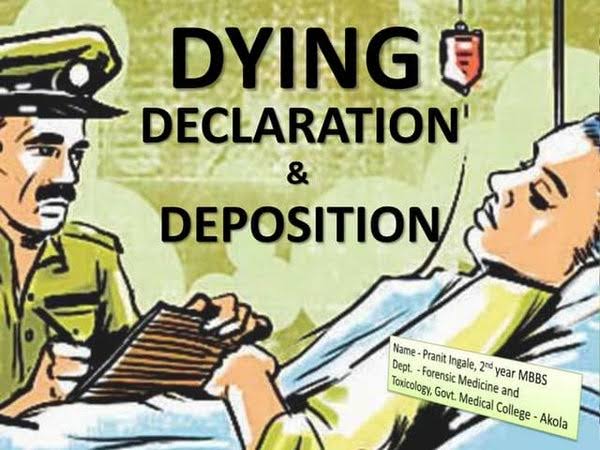G.S. Sandhawalia, J.@mdashThe petitioner has filed the present writ petition under Articles 226/227 of the Constitution of India for issuance of a writ in the nature of certiorari/Mandamus for quashing the possession notice dated 18.2.2010 issued u/s 13(4) as well as notice dated 30.1.2009 issued u/s 13(2) of the Securitization & Reconstruction of Financial Assets & Enforcement Security Interest Act, 2002 (hereinafter referred as to "the SARFAESI Act") and for issuance of a writ in the nature of Mandamus to recover the amount which had come to share of other insurers loanee (late Sh. Arun Jain) from the Insurance Company and to give the clearance certificate to the petitioner as she had already paid the loan amount which had come to her share and refund the excess amount recovered from the petitioner. The case of petitioner is that respondent No. 2, namely, Bank of Punjab Limited amalgamated with Centurian Bank Limited and accordingly a new entity M/s Centurian Bank of Punjab Limited was created. Subsequently M/s Centurian Bank of Punjab Limited merged and amalgamated with M/s HDFC Bank Limited vide order dated 23.5.2008 passed by the Reserve Bank of India. The petitioner, who is the mother of late Sh. Arun Jain, availed a house loan No. 43 LA 14154439 for a sum of Rs. 10,20,000/- from the Bank of Punjab Limited, Pakhowal Road, Ludhiana which was disbursed by the bank after mortgaging the original title deed of House No. 3099, Sector 38-39, Urban Estate, Samrala Road, Ludhiana. The said house loan was sanctioned subject to the conditions mentioned in the terms and conditions. Under condition No. 3 (insurance cover), the petitioner as well as her deceased son were insured vide file No. LCC/141500/104-05, loan account No. 43 LA 1415 for a period of 12 years and they were covered for the risks as mentioned in clause 12 of the Insurance Policy. The name of the assignee was mentioned as Bank of Punjab Limited now HDFC Bank and relation with the insured as loaner and loanee. As per the terms and conditions of the insurance policy, it was one of the essential condition to insure the personal risk of the loanee. The same was fulfilled by the respondent bank by insuring the petitioner and her deceased son under the insurance policy named "Awasiya Bima Kawach". Thereafter, on 14.6.2004 the loan amount was disbursed to the petitioner and her deceased son. The petitioner and her deceased son paid a sum of Rs. 21,311/- as first installment as well as other expenditure like premium of the insurance and were to pay EMI at the rate of Rs. 12,248/- for sixty months and further EMI at the rate of Rs. 8,732/- for next 84 months. The son of the petitioner who was well qualified and working as an Area Sales Manager died in a road side accident on 21.11.2004. The petitioner immediately informed the respondent bank about the death of her son by sending a letter dated 6.12.2004 stating that the petitioner as well as her deceased sort was insured by the Bank and, therefore, request was made to the bank to get the insurance claim from the insurance company and adjust the 50% share of home loan of her deceased son Sh. Arun Jain against the total loan of Rs. 10,20,000/-. The bank gave intimation that petitioner should pay her share of loan i.e. 50% of loan amount, and share of her son would be recovered from insurance company. Thereafter, the petitioner paid a sum of Rs. 6,87,670/- which was more than her share upto October, 2009 and made several requests to the bank for settling the account but the matter was delayed on one pretext or the other inspite of the fact that the bank was legally bound to claim the share of loan in respect of deceased Arun Jain under Clause 12(d) of the Insurance Policy and adjust the same in his loan account. The petitioner received a demand notice u/s 13(2) of the SARFAESI Act against which the petitioner filed reply/objections u/s 13(3A) of the SARFAESI Act. The bank after receiving objections had called the petitioner and the matter was settled with the bank. It was decided that the claim of the insurance in the name of the son of the petitioner would be taken up by the bank from the insurance company whereas the petitioner would make the payment of a sum of Rs. 1,34,120/-. It was also agreed that over dues like LP charges and other charges amounting to Rs. 23,000/- approximately would be waived of. The settlement was signed by the husband of the petitioner and the respondent bank on 30.3.2009 and the petitioner deposited the agreed sum vide receipt No. 15662824 dated 30.3.2009. Thereafter, the petitioner received reply to her objections dated 31.3.2009 whereby respondent bank refused to settle the liability of the deceased son and threatened to take forcible physical possession of the mortgaged property inspite of the petitioner paying the amount more than her share. The bank further demanded a sum of Rs. 7,74,906/- with interest till clearance of the dues. A notice dated 18.2.2010 u/s 13(4) of the SARFAESI Act was received for taking the physical possession of the mortgaged property on 25.2.2010 and further demand of a sum of Rs. 9,02,115/- along with interest thereon was made. The petitioner through her husband filed an application before the Chairman, Permanent Lok Adalat, Ludhiana u/s 22(c) of the Legal Service Authority Act for settlement of the dispute and the bank was proceeded against exparte and in such circumstances the writ petition has been filed.
2. Written statement was filed on behalf of respondents wherein various defences were taken including that the petitioner has an alternative and efficacious remedy under the Securitization Act and can approach the Debt Recovery Tribunal. The insurance coverage was denied and it was pleaded that the respondent bank did not provide any insurance coverage and neither the premium had been received by the bank to provide any coverage nor the bank in any manner was required to provide any insurance coverage. The file no. mentioned in the documents and Annexure P-2 was incomplete copy and did not contain the details of the insurance company and further neither any premium nor any insurance coverage was mentioned therein and the same had not been signed by the bank. The petitioner was asked to produce the original of the same so that appropriate reply could be given.
3. The petitioner filed replication to the written statement alleging that the loan amount for a period of 12 years covered the risk of the loanee and respondent bank''s stand was falsified as on 23.11.2004 again the mortgaged property was insured under the fire policy through IFFCO TOKIO General Insurance Company Ltd. and the respondents had played the role of agent vide agent No. 14001027 and tie up number BOP Pakhowal Road, Ludhiana. The premium had been taken from the respondent bank by swiping the same from the account of the petitioner and the copy of the policy as well as attachment sheet were appended.
4. An affidavit dated 10.3.2012 was also filed by the Manager, HDFC Bank Ltd. wherein it was averred that as per the record of the Bank of Punjab which merged with the Centurion Bank of Punjab and which later on merged with the HDFC Bank there was only one insurance policy in respect of the loan in question which was a fire policy covering the building/property which was hypothecated to the bank. The policy was for the period from 23.11.2004 to 22.11.2005 and there was no other policy covering the housing loan. It was further averred that no premium for any other policy had been deducted as per account statement of the loan.
5. Counsel for the petitioner submits that in view of the insurance policy, the petitioner is liable to pay 50% of loan amount, which has already been paid, and the balance 50% loan amount fell to the share of her son which was liable to be adjusted against the Insurance policy as taken out by the Bank of Punjab originally.
6. This fact was vehemently opposed by the bank on the ground that there was only a fire policy in place till 22.11.2005 and there was no other policy by which risk could have been covered and the benefit could not be given to the petitioner to the extent of 50% of the loan amount.
7. After hearing the parties and perusing the record, it is apparent that disputed questions of fact have arisen as the original of Annexure P-2 could not be produced by the petitioner wherein she had sought reliance upon Clause 12(d) thereof. Photocopy of the same was only produced in Court which did not bear signature of any bank official. The respondents have denied this fact and have filed an affidavit to this effect that the original policy in their record was a fire policy only. It has also been submitted that there is an alternative statutory remedy available to the petitioner u/s 17 of the SARFAESI Act.
8. After hearing learned counsel for the parties, in our opinion, once the bank has taken measures u/s 13(4) of the SARFAESI Act to take physical possession of the property and the lis requires resolving of disputed questions of fact, it would be appropriate that an application is filed before the Debt Recovery Tribunal. This fact could not be rebutted by the counsel for the petitioner. Accordingly, in the facts and circumstances, the petitioner is relegated to avail the alternative remedy and the discretionary jurisdiction of this Court is not liable to be exercised.
9. The Hon''ble Apex Court in
(a) adjudication of writ petition involves any complex and disputed questions of facts and whether they can be satisfactorily resolved;
(b) the petition reveals ail material facts;
(c) the petitioner has any alternative or effective remedy for the resolution of the dispute;
(d) person invoking the jurisdiction is guilty of unexplained delay and laches;
(e) ex facie barred by any laws of limitation;
(f) grant of relief is against public policy or barred by any valid law; and host of other factors.
10. In 27. It is a matter of serious concern that despite repeated pronouncement of this Court, the High Courts continue to ignore the availability of statutory remedies under the DRT Act and SARFAESI Act and exercise jurisdiction under Article 226 for passing orders which have serious adverse impact on the right of banks and other financial institutions to recover their dues. We hope and trust that in future the High Courts will exercise their discretion in such matters with greater caution, care and circumspection.

